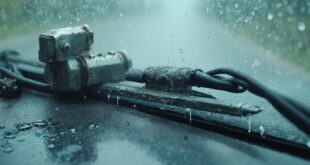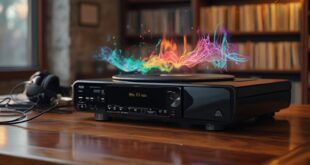Yes, you can charge your car battery through the cigarette lighter, but be aware of the limitations. The lighter typically supports only 10-15 amps, so it's best for trickle charging rather than reviving deeply discharged batteries. Make sure to use a compatible charger that doesn't exceed 5-10 amps. Regularly check your battery's health and connections for ideal performance. If you're curious about more tips and methods, you'll find useful information ahead.
Understanding the Cigarette Lighter Charging Method
Charging your car battery through the cigarette lighter can be a convenient option, but it comes with some important limitations.
This method typically allows for a power draw of only 10 to 15 amps, which isn't enough for deeply discharged batteries. You'll need a compatible charger with a lighter plug, as standard chargers may not fit.
While it's suitable for trickle charging or maintaining battery life, the charging speed is generally slower compared to direct connections.
Always verify your charger's power requirements don't exceed the outlet's capacity to avoid damaging your vehicle's electrical system.
Safety is key, so choose highly rated chargers.
Power Limitations and Considerations
While using the cigarette lighter to charge your car battery offers convenience, you should be aware of the power limitations associated with this method. The wiring and fuses can typically handle only 10 to 15 amps, making it suitable for trickle charging or maintaining a battery, not for deeply discharged ones.
Confirm your charger matches this power requirement to avoid issues. Charging through the lighter is often slower compared to direct connections, so patience is key.
Finally, always choose high-quality chargers to guarantee safety and efficiency, as exceeding the outlet's capacity could lead to blown fuses or worse.
Steps for Charging Your Battery Through the Cigarette Lighter
To charge your battery through the cigarette lighter, start by verifying your vehicle's ignition is on; this activates the power supply.
Next, check if your lighter socket provides power with the ignition on. If it does, plug in a compatible charger designed for this purpose.
Make certain the charger doesn't exceed 5-10 amps to avoid blowing a fuse.
If you're using a solar charger, position it for ideal sunlight and allow at least six hours for effective charging.
Always refer to your charger's manual for specific instructions to guarantee safe and effective charging.
Maintaining Battery Health for Optimal Performance
Maintaining your battery's health is essential for ensuring ideal performance and longevity.
Regularly test your battery's voltage; it should be between 12.4V and 12.7V. Keep terminals clean and check fluid levels in non-sealed batteries to boost performance.
Tighten any loose connections and avoid deep discharges, as this can shorten lifespan. Using a trickle charger during long periods of inactivity helps maintain charge levels.
Also, be aware of signs of a failing battery, like slow engine cranking or dim lights.
Taking these steps will keep your battery running smoothly and extend its overall life.
Troubleshooting Common Battery Issues
Even with proper maintenance, battery issues can still arise, causing frustration and potential breakdowns.
To troubleshoot, start by checking for corrosion on terminals, as this can hinder performance. Use a multimeter to test voltage; a healthy battery should read between 12.4V and 12.7V.
If your battery won't hold a charge, inspect the alternator and look for loose or damaged cables. Age is another factor; batteries typically last 3-5 years.
If you notice slow engine cranks or dim lights, it's a sign your battery may be failing. Regular checks can help you catch issues before they escalate.
Safety Measures When Charging Batteries
While charging batteries can be a straightforward task, taking proper safety measures is essential to prevent accidents and guarantee effective charging.
Always disconnect the negative terminal first when removing a battery, and wear gloves and safety goggles to avoid acid exposure. Confirm your charging area is well-ventilated and steer clear of sparks or flames near battery terminals.
Regularly check for loose connections and keep terminals clean. Finally, dispose of old batteries at designated recycling centers to guarantee safe handling and protect the environment.
Following these precautions will help confirm a safer and more efficient battery charging experience.
Alternatives to Charging Through the Cigarette Lighter
Taking safety measures when charging batteries is important, but you might be looking for more effective ways to power your car's battery than through the cigarette lighter.
Consider these alternatives:
- Direct Battery Connection: This method allows for faster charging, especially for deeply discharged batteries.
- Portable Jump Starter: These handy devices can jump-start your battery and often include USB ports for charging electronics.
- Solar Chargers: If you're parked in the sun, these can provide a sustainable power source for trickle charging.
Embracing these options can enhance your battery's health and guarantee reliable vehicle performance.
Frequently Asked Questions
Can I Use a Standard Phone Charger to Charge My Car Battery?
You can't use a standard phone charger to charge your car battery. They're designed for low power, while car batteries need higher amperage. Stick to chargers specifically made for automotive batteries to guarantee safe and effective charging.
How Long Does It Take to Charge a Battery Through the Lighter?
Charging a battery through the lighter usually takes several hours, depending on the charger's output and battery condition. It's slower than direct connections, so plan for a longer wait if your battery's deeply discharged.
Will Charging Through the Lighter Drain My Car's Battery?
Charging through the lighter can drain your car's battery, especially if the vehicle's engine isn't running. It's best to monitor your battery's voltage during charging to prevent potential issues caused by excessive power draw.
What Types of Chargers Are Compatible With the Cigarette Lighter?
You can use compatible chargers designed specifically for cigarette lighter sockets. Look for those labeled as car chargers or trickle chargers, ensuring they don't exceed the outlet's power capacity to avoid potential issues.
Can I Charge a Completely Dead Battery This Way?
You can't effectively charge a completely dead battery through the cigarette lighter. This method's limited power output only suits trickle charging or maintenance, so consider direct connections for deeply discharged batteries to guarantee proper charging.
 Car Service Land Coupons for Oil change, Tires, Wheel alignment, Brakes, Maintenance
Car Service Land Coupons for Oil change, Tires, Wheel alignment, Brakes, Maintenance




